Discover Alameda History Icons

Alameda Corridor Business Improvement District
Self-guided Sidewalk History Tour

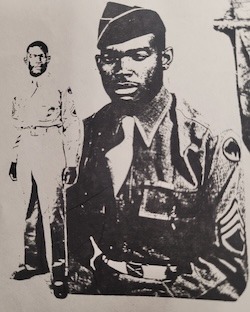
Photo Provided by Gary Keith Sowell
Booker T. Sowell 1919-1991
Location: Corner of W. Alameda Ave. and S. Pierce St. (SE Corner)
Biography provided by Gary Keith Sowell, son of Booker T. Sowell:
Booker T. Sowell was born on October 29, 1919, in San Augustine.Texas. Mr. Sowell enlisted in the US Army and trained in Arizona. In 1940 Sowell was assigned to the U.S. 92nd Infantry Division, later known as the “Buffalo Soldier” division, deploying to La Spezia and Genoa in the Serchio Valley in Italy. After the war, Booker returned to his hometown in Texas but felt he needed to move on with his life and traveled north to find a more rewarding lifestyle.
He caught a train to Colorado and found work with a housing developer in Jefferson County. After a few months, he was able to bring his family to Denver. Sowell was interested in purchasing a home on W. Center Ave. but ran into issues with the owner, who was afraid to sell the house because of laws at the time. In 1946 it was illegal to sell property to a Black man. However, Sowell had a Jewish friend who helped him buy the property, making Sowell the first Black man to live and own property in Jefferson County, Colorado. Booker and his wife had nine children who were successful athletes in Jefferson County Public Schools.
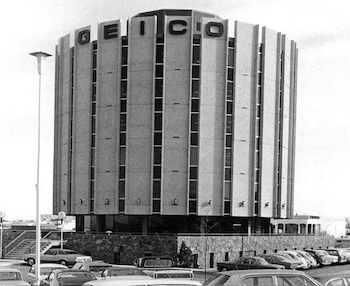
The Geico Building 1972 – 2012
Location: West Alameda Avenue and Wadsworth Boulevard
History: Built in 1972, the six-story circular Belmar Office Tower, otherwise known as The Geico Building, stood at West Alameda Avenue and Wadsworth Boulevard. The round tower design was part of an architectural trend going around the country at that time. The building was an iconic Lakewood landmark for decades but fell into poor condition and was slated for demolition in 2012. Rather than using conventional demolition methods, the contractor deconstructed the building to maximize recycling opportunities for the waste.
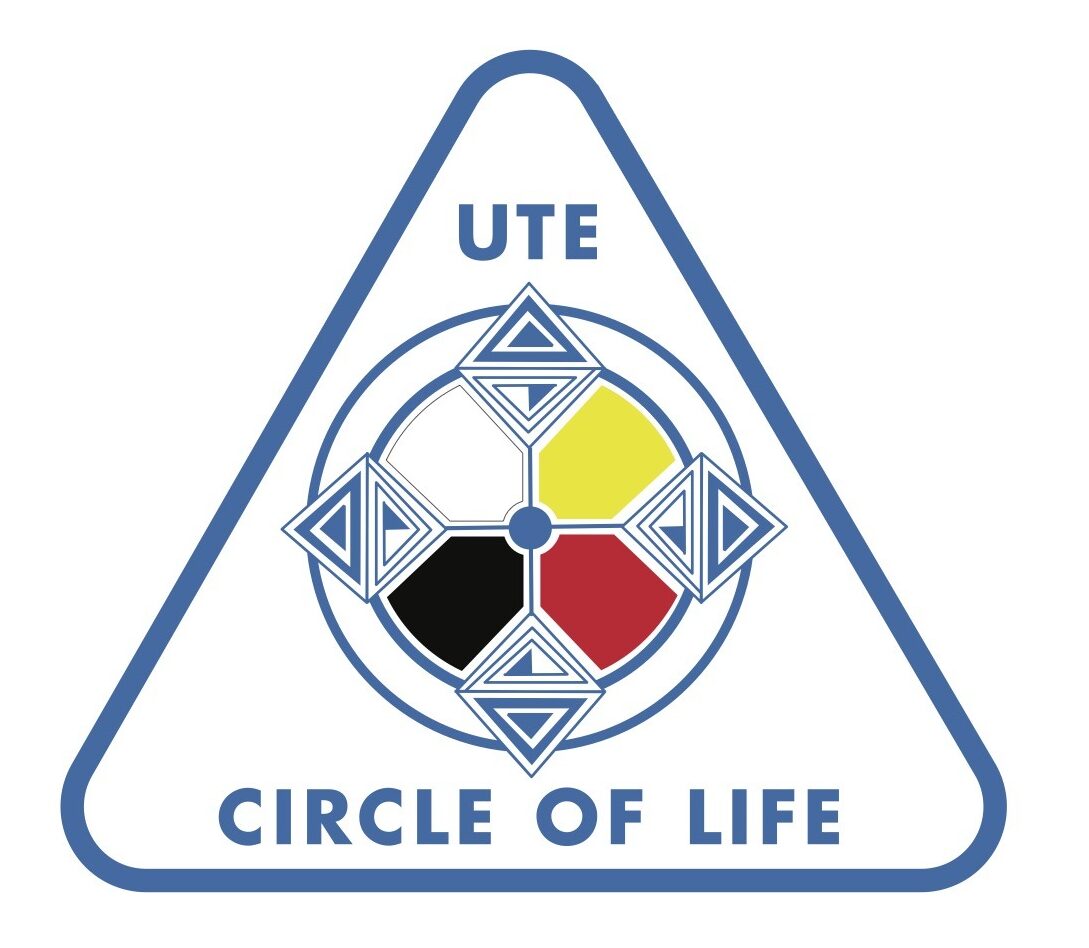
Ute History Icon designed by artist Denise “Vamp” Zubizarreta, an interdisciplinary artist and independent researcher.

Ute History Icon designed by artist Denise “Vamp” Zubizarreta, an interdisciplinary artist and independent researcher.
Circle of Life
Location: Corner of W. Alameda Ave. and S. Saulsbury St. (SW Corner).
History: The People of the early Ute Tribes lived a life in harmony with nature, each other, and all of life. The Circle of Life symbolizes all aspects of life. The Circle represents the Cycle of Life from birth to death of People, animals, all creatures, and plants. The early Uto People understood this cycle. They saw its reflection in all things. This brought them great wisdom and comfort. The Eagle is the spiritual guide of the People and of all things. Traditionally, The Eagle appears in the middle of the Circle.
The Circle is divided into four sections. In the Circle of Life, each section represents a season: spring is red, summer is yellow, fall is white, and winter is black. The Circle of Life joins together the seasonal cycles and the life cycles. Spring represents infancy, a time of birth, of newness-the time of “spring Mon, Bear Goes Out.” Summer is Youth. This is a time of curiosity, dancing, and singing. Fall represents Adulthood, the time of manhood and womanhood. This is the time of harvesting and of change – “When Trees Turn Yellow” and Falling Leaf Time.” Winter begins to gain wisdom and knowledge – of “Could Weather Here.” Winter represents the Old Age; a time to prepare for passing into the spirit world.
Fun Fact: The Circle also symbolizes the annual journey of the People. In this journey, the People moved from their winter camp to the mountains in the spring.

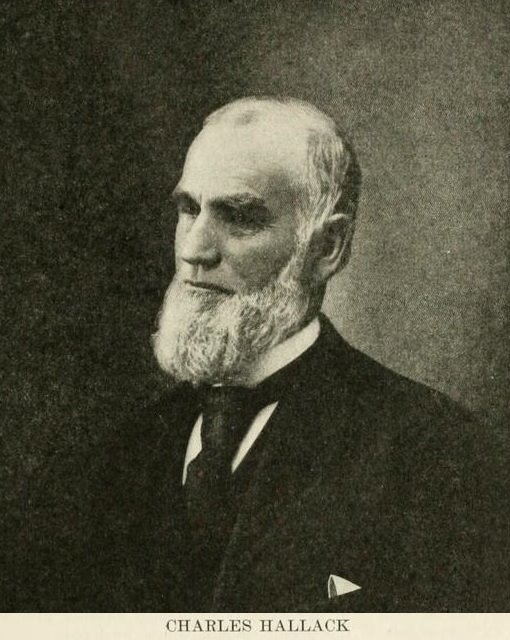
The Hallack House – 1878-1940
Location: W. Alameda Ave. and S. Teller St. (at the Cinemark Century Theater)
History: Around 1878 Denver lumber baron Charles Hallock built a magnificent red brick summer house four stories high with a ballroom on the top floor in what is now Belmar. The mansion stood at the end of a long tree-lined lane and featured glazed tile colonial revival-style fireplaces, flagstone window sills, and solid oak doors. Charles Hallack died in 1906 and left the house to his son who tragically died the same year. Charles Hallack’s wife Rachel inherited the mansion and left it to slowly deteriorate. The mansion was torn down around 1940 by a contractor who salvaged the remaining fine materials to use in building new homes.
Fun Fact: The only remnant of the Hallack estate is the carriage house now located at Heritage Lakewood.
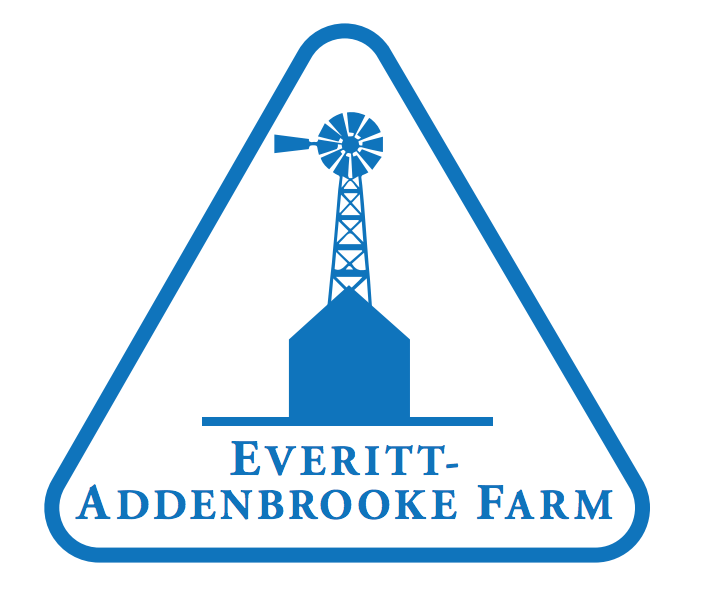
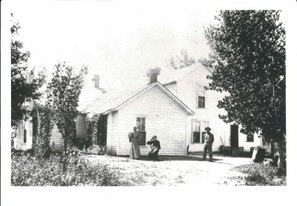
The Everitt-Addenbrooke Farm – 1876
Location: SW Corner of Alameda and Garrison
History: John Edward Everitt is one of Lakewood’s earliest pioneers! In the late 1860s, he traveled from Ohio with his parents in an ox-drawn wagon. In 1876 he established a homestead on the land south of Alameda and west of Garrison. The farm ultimately grew to over 400 acres. In 1895 President Grover Cleveland signed a patent granting the 160 acres to Everitt and his family. In 1978 the City of Lakewood purchased the land to develop Addenbrooke Park, formally dedicated in 1989. The iconic windmill standing watch on Garrison was restored in 1990 as a reminder of one of Lakewood’s early pioneer families.
Fun Fact: John Everitt built his first home using a very unusual method. Starting with a wooden frame, he stretched cloth fabric between the posts and applied a coat of mud, letting it harden before applying the next coat. He built the roof from empty Chinese tea tins he bought from Denver merchants.

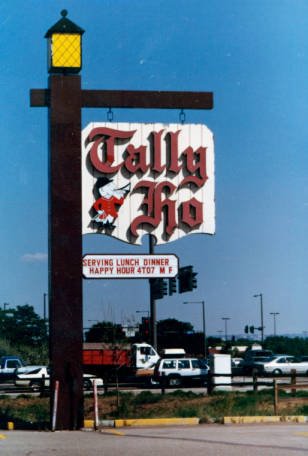
The Tally Ho – 1960-1993
Location: NW Corner of Alameda and Yarrow
History: Long before Belmar, the Tally Ho was the place to be in Lakewood! the Tally Ho Supper Club was built in 1960 on the site of an old pizzeria at Alameda and Wadsworth. It featured cocktails, lunch, and dinner menus, and music by the Billy Wilson Trio. In the mid-1960s Billy Wilson and his business partner Joel Barron purchased the Tally Ho. The restaurant became a local hangout and the place where “everything happened” in Lakewood, including planning sessions for Lakewood’s 1969 incorporation. The Tally Ho was torn down in 1993 and today the Olive Garden stands in its place.
Fun Fact: Billy Wilson and Joel Barron chose the name for the restaurant when one of them saw a crayon box with the words “tally Ho” written on the side.


On the Road, Jack Kerouac in Lakewood 1949
Location: SW Corner of Alameda and Harlan
History: Beat author Jack Kerouac electrified the literary world with the publication of On the Road in 1957. The book tells the story of a series of cross-country trips in which he frequently visited Denver. He moved to Colorado in 1949 and used proceeds from the advance on his first book to buy a home on West Center Avenue in what was then unincorporated Jefferson County. He started writing the first draft outline of On the Road while living in his Lakewood home. He sold the house later in 1949 and it remains a private residence. On the Road is viewed as a defining work of the postwar Beat and Counterculture generations.
Fun Fact: Jack Kerouac typed the manuscript for On the Road on what he called “the scroll” a continuous 120-foot-long scroll of tracing paper sheets he cut to size and taped together. He then typed it single-spaced without margins or paragraph breaks.
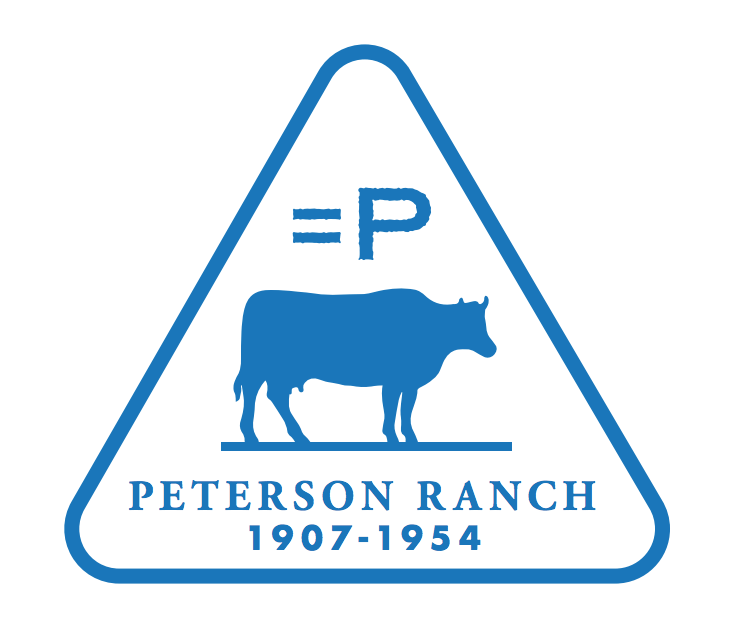

The Peterson Ranch 1907-1954
Location: Along Alameda at the Chase St seating area
History: Swedish immigrant Frank Peterson arrived in Colorado in 1891 and worked as a miner for several years. In January 1907 Frank and his wife Amanda bought the five-acre Smith Farm just north of W. Bayaud and Depew. Ultimately, the Peterson Ranch covered the entire area along Alameda from Sheridan west to Harlan and north to West First Avenue. Frank Peterson suffered from miners’ consumption or black lung disease from his mining days and passed away in 1926. The Peterson family continued to raise crops and livestock on this land until 1954.
Fun Fact: Sunday morning breakfast on the Peterson spread often featured a Swedish delicacy called “Agarara”, a thick gravy made with sausage grease, flour, milk, and eggs poured over homemade bread.
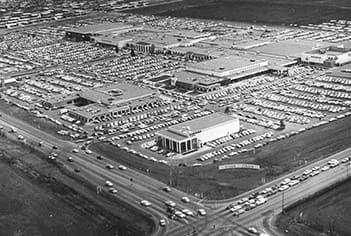
Photo provided by the Lakewood Heritage Center
Villa Italia 1966-2001
Location: NW Corner of Alameda and Teller
History: Looking south across Alameda stood Villa Italia Mall built by developer Gerri Von Frellick. Upon completion in 1966 “Villa” was over 500,000 square feet, making it one of the largest enclosed malls in the world. With its distinctive Italian design Villa became a prime shopping destination in the Denver region and the symbolic center and gathering place of the new City of Lakewood incorporated in 1969. After a period of decline in the late 1990 Villa closed in 2001 and was demolished in 2002.
Fun Fact: One part of the original mall can still be seen today, the Foley’s Department Store building was repurposed as the Belmar Dick’s Sporting Goods.
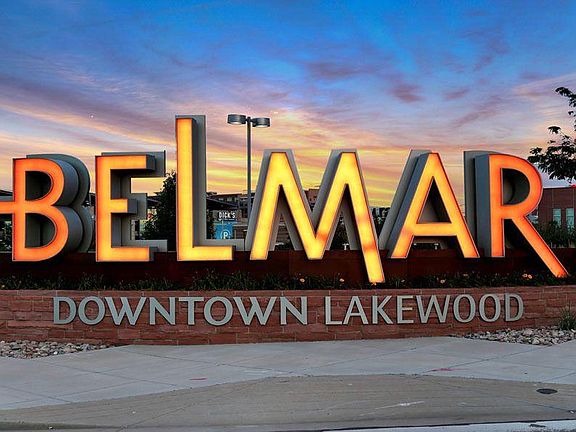
Belmar est. 2004
Location: SE Corner of Alameda and Teller
History: As Villa Italia declined the City opted to act and start looking for a developer to help imagine how a mall might evolve into a real downtown. This process eventually led the city to Continuum Partners and a remarkable public-private partnership was formed to give the property new life. From the ruins of the deteriorating Villa Italia mall arose Belmar. The new 22-city block downtown included over 50 new buildings laid out on a network of streets and sidewalks with a plaza and ice rink at its center. Today Belmar is the thriving heart of Lakewood!
Fun Fact: Belmar was designed with sustainability in mind featuring 8,370 solar panels producing 2.3 million megawatts of energy annually and a wind farm generating 700-900 kilowatt hours of electric power per month. 85% of the material from Villa Italia was recycled as fill material for Belmar!

Photo provided by the Lakewood Heritage Center
Belmar Mansion 1937-1973
Location: NE Corner of Alameda and Teller
History: In 1933 May Bonfils-Stanton, heiress to the Denver Post newspaper fortune, inherited 10 acres of land on Kountze Lake to the southwest across Wadsworth. In 1937 she built the stately 20-room, terra cotta-coated Belmar Mansion with magnificently landscaped grounds. The mansion was designed as a replica of Marie Antoinette’s Petite Trianon Chateau. The mansion was torn down in 1971 and the original boat house is preserved in Belmar Park.
Fun Fact: According to some accounts, in the final weeks prior to demolition of the mansion in 1970 a band of hippies moved in to take over the premises. They were soon evicted but allowed to haul away anything they found useful to build their new commune outside Taos, NM.
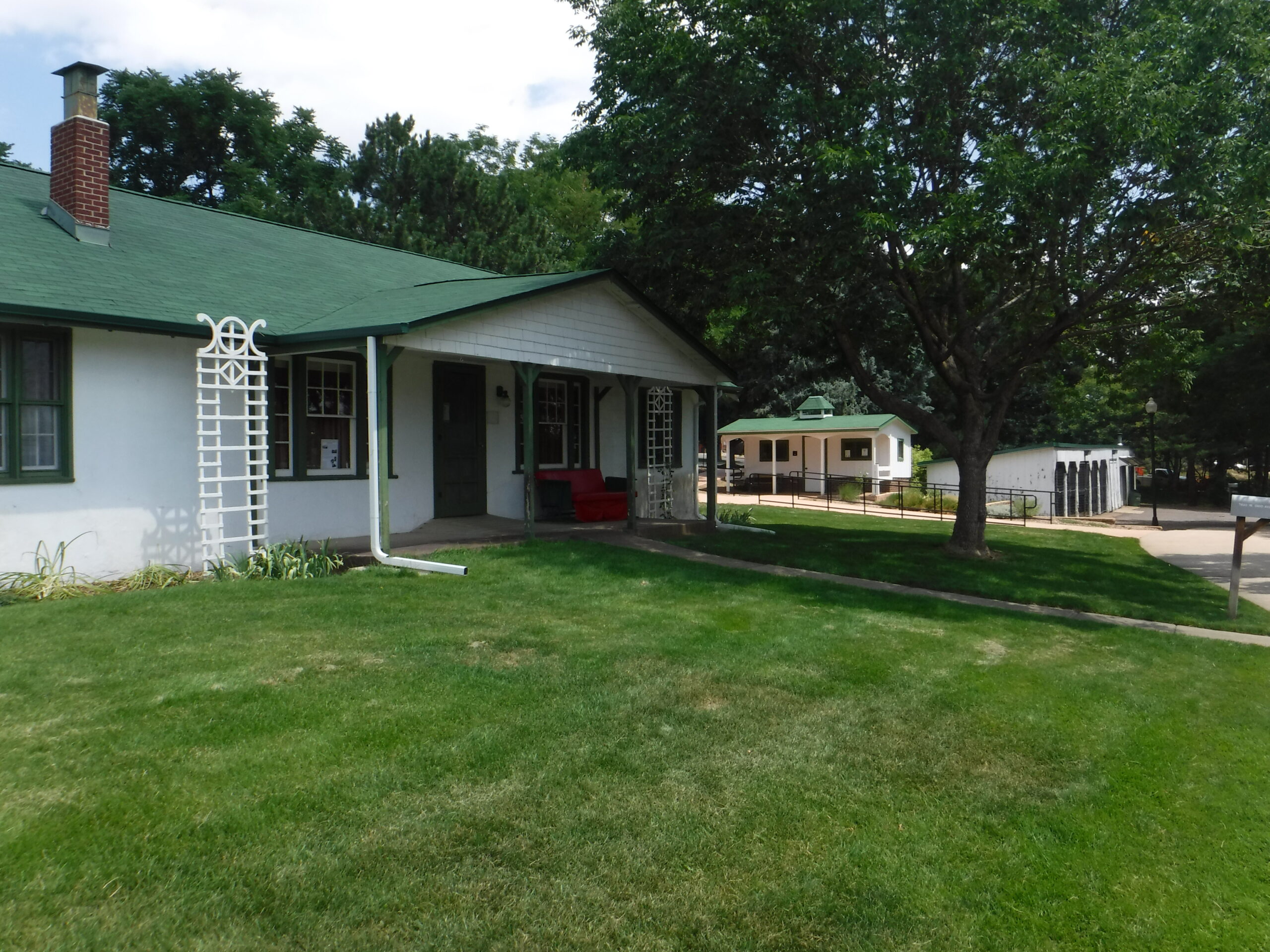
Belmar Farms 1933-1962
Location: NW Corner of Alameda and Teller
History: The area of Belmar you see to the south was once part of Belmar Farms created by May-Bonfils on the land surrounding her estate, primarily as a hobby farm and to protect her privacy. She raised Black Angus cattle and prized Suffolk sheep, milk cows and chickens, and crops in the outlying fields. She also created a private nature preserve on her estate with a herd of deer and peacocks.
Fun Fact: Belmar Farms included a garden with fruits and vegetables. In the 1950s and 60s, local boys from the area liked to scale the high fence and evade the armed guards and dogs to help themselves to watermelons from May’s garden!
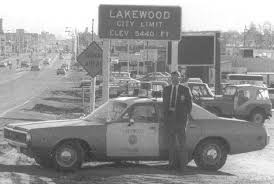
Photo courtesy of the Lakewood Police Department, circa 1971
City of Lakewood Incorporation 1969
Location: SW Corner of Alameda and Wadsworth
History: The largely rural area that ultimately became Lakewood changed dramatically during WWII when wartime production at the Denver Ordinance Plant (now Denver Federal Center) brought extraordinary population growth. The population of Jefferson County grew 80% during the 1940s and doubled again in the 1950s. In June 1969 the City of Lakewood was incorporated by vote of the people with the new city spanning 26 square miles, one of the largest incorporations in the country at that time.
Fun Fact: Lakewood was originally named Jefferson City in the June 1969 incorporation vote. The name Jefferson City was unpopular with residents and a range of other names were suggested to replace it including Lunar City and Apollo to celebrate the recent moon landings. In a vote held in November of 1969, voters selected the more traditional Lakewood.

Alameda Corridor Business Improvement District (ACBID)
Location: SE Corner of Alameda and Wadsworth
History: In 2003 the City of Lakewood established the Alameda Corridor Business Improvement District to improve the West Alameda corridor from Sheridan to Carr Street. Within the corridor, business owners voted to tax themselves to pay for improvements. ACBID continues to serve West Alameda through numerous public art installations, landscaping, and public event sponsorships.
Fun Fact: After years of planning, in 2022 ACBID launched its Discover Alameda trail linking together its dozens of public artworks and history icons and creating a unique user experience. https://alamedaconnects.org/discover-alameda/ Discover Alameda is a 5-mile point-to-point bike/walk path connecting segmented loops.
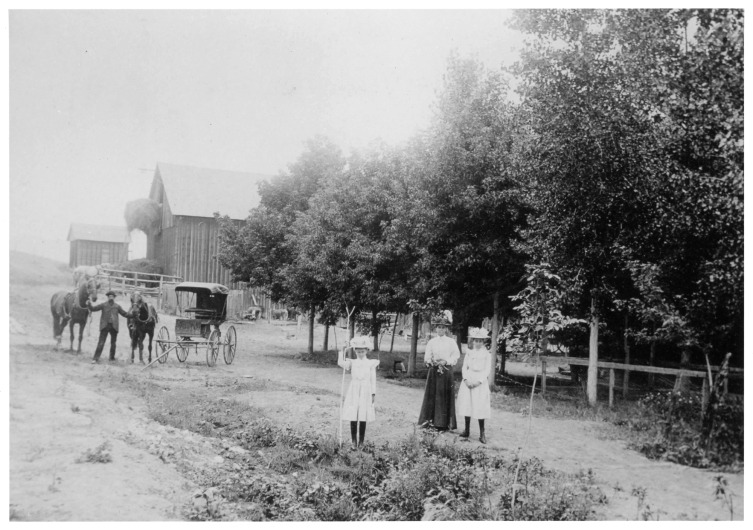
Schnell Farms. Photo from the National Register of Historic Places
Lakewood Agricultural Heritage
Location: NE Corner of Alameda and Wadsworth
History: Lakewood’s agricultural roots date to its earliest settlers in the 1860’s. One of the most prominent farms in this area was the O’Kane Farm and Harp Dairy located to the northeast at West 1st Avenue between Teller and Newland streets. The original O’Kane farmhouse dating to the 1890s is preserved in O’Kane Park.
Fun Fact: Many of Lakewood’s early homesteads were acquired with military land warrants. These warrants were often issued to soldiers either as an incentive for enlistment or as a bonus for service. The original grant for the land where Lakewood City Hall and Belmar Park is located was a military warrant to Abby Craig, widow of Alexander Craig, a veteran of the War of 1812.

Alameda Ave. Extension Project WPA 1935-1937
Location: NW Corner of Alameda and Wadsworth
WPA History: During the Great Depression, the Works Progress Administration (WPA) started work on the Alameda Extension Project in 1935 connecting Denver with Red Rocks Park and Amphitheater. 5000 men labored for 2 years to build the road, which officially opened in 1937.
Fun Fact: Before construction by the WPA in 1935, Alameda Avenue did not extend west of Sheridan Blvd. into Jefferson County. Construction of the Alameda Extension coincided with the construction of the Belmar Mansion by May Bonfils-Stanton from 1935-37.
Discover Alameda History Icons

Alameda Corridor Business Improvement District
Self-guided Sidewalk History Tour


Photo Provided by Gary Keith Sowell
Booker T. Sowell 1919-1991
Location: Corner of W. Alameda Ave. and S. Pierce St. (SE Corner)
Biography provided by Gary Keith Sowell, son of Booker T. Sowell:
Booker T. Sowell was born on October 29, 1919, in San Augustine.Texas. Mr. Sowell enlisted in the US Army and trained in Arizona. In 1940 Sowell was assigned to the U.S. 92nd Infantry Division, later known as the “Buffalo Soldier” division, deploying to La Spezia and Genoa in the Serchio Valley in Italy. After the war, Booker returned to his hometown in Texas but felt he needed to move on with his life and traveled north to find a more rewarding lifestyle.
He caught a train to Colorado and found work with a housing developer in Jefferson County. After a few months, he was able to bring his family to Denver. Sowell was interested in purchasing a home on W. Center Ave. but ran into issues with the owner, who was afraid to sell the house because of laws at the time. In 1946 it was illegal to sell property to a Black man. However, Sowell had a Jewish friend who helped him buy the property, making Sowell the first Black man to live and own property in Jefferson County, Colorado. Booker and his wife had nine children who were successful athletes in Jefferson County Public Schools.

The Geico Building 1972 – 2012
Location: West Alameda Avenue and Wadsworth Boulevard
History: Built in 1972, the six-story circular Belmar Office Tower, otherwise known as The Geico Building, stood at West Alameda Avenue and Wadsworth Boulevard. The round tower design was part of an architectural trend going around the country at that time. The building was an iconic Lakewood landmark for decades but fell into poor condition and was slated for demolition in 2012. Rather than using conventional demolition methods, the contractor deconstructed the building to maximize recycling opportunities for the waste.

Ute History Icon designed by artist Denise “Vamp” Zubizarreta, an interdisciplinary artist and independent researcher.

Ute History Icon designed by artist Denise “Vamp” Zubizarreta, an interdisciplinary artist and independent researcher.
Circle of Life
Location: Corner of W. Alameda Ave. and S. Saulsbury St. (SW Corner).
History: The People of the early Ute Tribes lived a life in harmony with nature, each other, and all of life. The Circle of Life symbolizes all aspects of life. The Circle represents the Cycle of Life from birth to death of People, animals, all creatures, and plants. The early Uto People understood this cycle. They saw its reflection in all things. This brought them great wisdom and comfort. The Eagle is the spiritual guide of the People and of all things. Traditionally, The Eagle appears in the middle of the Circle.
The Circle is divided into four sections. In the Circle of Life, each section represents a season: spring is red, summer is yellow, fall is white, and winter is black. The Circle of Life joins together the seasonal cycles and the life cycles. Spring represents infancy, a time of birth, of newness-the time of “spring Mon, Bear Goes Out.” Summer is Youth. This is a time of curiosity, dancing, and singing. Fall represents Adulthood, the time of manhood and womanhood. This is the time of harvesting and of change – “When Trees Turn Yellow” and Falling Leaf Time.” Winter begins to gain wisdom and knowledge – of “Could Weather Here.” Winter represents the Old Age; a time to prepare for passing into the spirit world.
Fun Fact: The Circle also symbolizes the annual journey of the People. In this journey, the People moved from their winter camp to the mountains in the spring.


The Hallack House – 1878-1940
Location: W. Alameda Ave. and S. Teller St. (at the Cinemark Century Theater)
History: Around 1878 Denver lumber baron Charles Hallock built a magnificent red brick summer house four stories high with a ballroom on the top floor in what is now Belmar. The mansion stood at the end of a long tree-lined lane and featured glazed tile colonial revival-style fireplaces, flagstone window sills, and solid oak doors. Charles Hallack died in 1906 and left the house to his son who tragically died the same year. Charles Hallack’s wife Rachel inherited the mansion and left it to slowly deteriorate. The mansion was torn down around 1940 by a contractor who salvaged the remaining fine materials to use in building new homes.
Fun Fact: The only remnant of the Hallack estate is the carriage house now located at Heritage Lakewood.


The Everitt-Addenbrooke Farm – 1876
Location: SW Corner of Alameda and Garrison
History: John Edward Everitt is one of Lakewood’s earliest pioneers! In the late 1860s, he traveled from Ohio with his parents in an ox-drawn wagon. In 1876 he established a homestead on the land south of Alameda and west of Garrison. The farm ultimately grew to over 400 acres. In 1895 President Grover Cleveland signed a patent granting the 160 acres to Everitt and his family. In 1978 the City of Lakewood purchased the land to develop Addenbrooke Park, formally dedicated in 1989. The iconic windmill standing watch on Garrison was restored in 1990 as a reminder of one of Lakewood’s early pioneer families.
Fun Fact: John Everitt built his first home using a very unusual method. Starting with a wooden frame, he stretched cloth fabric between the posts and applied a coat of mud, letting it harden before applying the next coat. He built the roof from empty Chinese tea tins he bought from Denver merchants.


The Tally Ho – 1960-1993
Location: NW Corner of Alameda and Yarrow
History: Long before Belmar, the Tally Ho was the place to be in Lakewood! the Tally Ho Supper Club was built in 1960 on the site of an old pizzeria at Alameda and Wadsworth. It featured cocktails, lunch, and dinner menus, and music by the Billy Wilson Trio. In the mid-1960s Billy Wilson and his business partner Joel Barron purchased the Tally Ho. The restaurant became a local hangout and the place where “everything happened” in Lakewood, including planning sessions for Lakewood’s 1969 incorporation. The Tally Ho was torn down in 1993 and today the Olive Garden stands in its place.
Fun Fact: Billy Wilson and Joel Barron chose the name for the restaurant when one of them saw a crayon box with the words “tally Ho” written on the side.


On the Road, Jack Kerouac in Lakewood 1949
Location: SW Corner of Alameda and Harlan
History: Beat author Jack Kerouac electrified the literary world with the publication of On the Road in 1957. The book tells the story of a series of cross-country trips in which he frequently visited Denver. He moved to Colorado in 1949 and used proceeds from the advance on his first book to buy a home on West Center Avenue in what was then unincorporated Jefferson County. He started writing the first draft outline of On the Road while living in his Lakewood home. He sold the house later in 1949 and it remains a private residence. On the Road is viewed as a defining work of the postwar Beat and Counterculture generations.
Fun Fact: Jack Kerouac typed the manuscript for On the Road on what he called “the scroll” a continuous 120-foot-long scroll of tracing paper sheets he cut to size and taped together. He then typed it single-spaced without margins or paragraph breaks.


The Peterson Ranch 1907-1954
Location: Along Alameda at the Chase St seating area
History: Swedish immigrant Frank Peterson arrived in Colorado in 1891 and worked as a miner for several years. In January 1907 Frank and his wife Amanda bought the five-acre Smith Farm just north of W. Bayaud and Depew. Ultimately, the Peterson Ranch covered the entire area along Alameda from Sheridan west to Harlan and north to West First Avenue. Frank Peterson suffered from miners’ consumption or black lung disease from his mining days and passed away in 1926. The Peterson family continued to raise crops and livestock on this land until 1954.
Fun Fact: Sunday morning breakfast on the Peterson spread often featured a Swedish delicacy called “Agarara”, a thick gravy made with sausage grease, flour, milk, and eggs poured over homemade bread.

Photo provided by the Lakewood Heritage Center
Villa Italia 1966-2001
Location: NW Corner of Alameda and Teller
History: Looking south across Alameda stood Villa Italia Mall built by developer Gerri Von Frellick. Upon completion in 1966 “Villa” was over 500,000 square feet, making it one of the largest enclosed malls in the world. With its distinctive Italian design Villa became a prime shopping destination in the Denver region and the symbolic center and gathering place of the new City of Lakewood incorporated in 1969. After a period of decline in the late 1990 Villa closed in 2001 and was demolished in 2002.
Fun Fact: One part of the original mall can still be seen today, the Foley’s Department Store building was repurposed as the Belmar Dick’s Sporting Goods.

Belmar est. 2004
Location: SE Corner of Alameda and Teller
History: As Villa Italia declined the City opted to act and start looking for a developer to help imagine how a mall might evolve into a real downtown. This process eventually led the city to Continuum Partners and a remarkable public-private partnership was formed to give the property new life. From the ruins of the deteriorating Villa Italia mall arose Belmar. The new 22-city block downtown included over 50 new buildings laid out on a network of streets and sidewalks with a plaza and ice rink at its center. Today Belmar is the thriving heart of Lakewood!
Fun Fact: Belmar was designed with sustainability in mind featuring 8,370 solar panels producing 2.3 million megawatts of energy annually and a wind farm generating 700-900 kilowatt hours of electric power per month. 85% of the material from Villa Italia was recycled as fill material for Belmar!

Photo provided by the Lakewood Heritage Center
Belmar Mansion 1937-1973
Location: NE Corner of Alameda and Teller
History: In 1933 May Bonfils-Stanton, heiress to the Denver Post newspaper fortune, inherited 10 acres of land on Kountze Lake to the southwest across Wadsworth. In 1937 she built the stately 20-room, terra cotta-coated Belmar Mansion with magnificently landscaped grounds. The mansion was designed as a replica of Marie Antoinette’s Petite Trianon Chateau. The mansion was torn down in 1971 and the original boat house is preserved in Belmar Park.
Fun Fact: According to some accounts, in the final weeks prior to demolition of the mansion in 1970 a band of hippies moved in to take over the premises. They were soon evicted but allowed to haul away anything they found useful to build their new commune outside Taos, NM.

Belmar Farms 1933-1962
Location: NW Corner of Alameda and Teller
History: The area of Belmar you see to the south was once part of Belmar Farms created by May-Bonfils on the land surrounding her estate, primarily as a hobby farm and to protect her privacy. She raised Black Angus cattle and prized Suffolk sheep, milk cows and chickens, and crops in the outlying fields. She also created a private nature preserve on her estate with a herd of deer and peacocks.
Fun Fact: Belmar Farms included a garden with fruits and vegetables. In the 1950s and 60s, local boys from the area liked to scale the high fence and evade the armed guards and dogs to help themselves to watermelons from May’s garden!

Photo courtesy of the Lakewood Police Department, circa 1971
City of Lakewood Incorporation 1969
Location: SW Corner of Alameda and Wadsworth
History: The largely rural area that ultimately became Lakewood changed dramatically during WWII when wartime production at the Denver Ordinance Plant (now Denver Federal Center) brought extraordinary population growth. The population of Jefferson County grew 80% during the 1940s and doubled again in the 1950s. In June 1969 the City of Lakewood was incorporated by vote of the people with the new city spanning 26 square miles, one of the largest incorporations in the country at that time.
Fun Fact: Lakewood was originally named Jefferson City in the June 1969 incorporation vote. The name Jefferson City was unpopular with residents and a range of other names were suggested to replace it including Lunar City and Apollo to celebrate the recent moon landings. In a vote held in November of 1969, voters selected the more traditional Lakewood.

Alameda Corridor Business Improvement District (ACBID)
Location: SE Corner of Alameda and Wadsworth
History: In 2003 the City of Lakewood established the Alameda Corridor Business Improvement District to improve the West Alameda corridor from Sheridan to Carr Street. Within the corridor, business owners voted to tax themselves to pay for improvements. ACBID continues to serve West Alameda through numerous public art installations, landscaping, and public event sponsorships.
Fun Fact: After years of planning, in 2022 ACBID launched its Discover Alameda trail linking together its dozens of public artworks and history icons and creating a unique user experience. https://alamedaconnects.org/discover-alameda/ Discover Alameda is a 5-mile point-to-point bike/walk path connecting segmented loops.

Schnell Farms. Photo from the National Register of Historic Places
Lakewood Agricultural Heritage
Location: NE Corner of Alameda and Wadsworth
History: Lakewood’s agricultural roots date to its earliest settlers in the 1860’s. One of the most prominent farms in this area was the O’Kane Farm and Harp Dairy located to the northeast at West 1st Avenue between Teller and Newland streets. The original O’Kane farmhouse dating to the 1890s is preserved in O’Kane Park.
Fun Fact: Many of Lakewood’s early homesteads were acquired with military land warrants. These warrants were often issued to soldiers either as an incentive for enlistment or as a bonus for service. The original grant for the land where Lakewood City Hall and Belmar Park is located was a military warrant to Abby Craig, widow of Alexander Craig, a veteran of the War of 1812.

Alameda Ave. Extension Project WPA 1935-1937
Location: NW Corner of Alameda and Wadsworth
WPA History: During the Great Depression, the Works Progress Administration (WPA) started work on the Alameda Extension Project in 1935 connecting Denver with Red Rocks Park and Amphitheater. 5000 men labored for 2 years to build the road, which officially opened in 1937.
Fun Fact: Before construction by the WPA in 1935, Alameda Avenue did not extend west of Sheridan Blvd. into Jefferson County. Construction of the Alameda Extension coincided with the construction of the Belmar Mansion by May Bonfils-Stanton from 1935-37.
ALAMEDA CONNECTS
393 S. HARLAN ST.
#210 B
LAKEWOOD, CO 80226
(303) 274-1807
